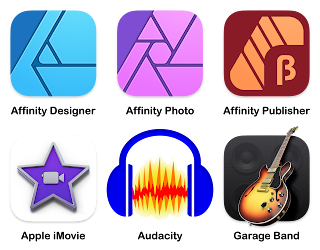Raoul
Walsh made some terrific pictures, some of them in fact great. You can make a good argument for High Sierra, Pursued, and White Heat,
but even the movies that aren’t obvious masterworks are pretty damn rousing: They Died with Their Boots On, Gentleman Jim, Colorado
Territory, The World in His Arms, The
Revolt of Mamie Stover. He made four
features with Cagney, and probably only Wellman, in The Public Enemy, had more to do with shaping Cagney’s screen
persona. He made ten features with Flynn, and while it’s safe to say Michael Curtiz
invented the dashing Flynn swashbuckler most of us think of - Robin Hood, The Sea Hawk - it’s Walsh who gets more out of Flynn the
actor.
Another
thing about Walsh is that he sets up bits of business that reverberate well
past their actual time on screen. There’s
a throwaway gag fairly early in The
Roaring Twenties that’s not only one of the coolest things in Walsh, it
turns out to be one of the coolest things in the history of the movies. (Since it’s a visual joke, I can’t really do
justice to it, but here goes.) Cagney
meets Priscilla Lane
and falls head over heels. He squires
her home on the late train, from midtown Manhattan
to someplace out in the sticks, maybe Yonkers. Cagney mutes the trademark Cagney wiseacre, and
delivers enormous yearning and charm. In
the end, she’s fated to wind up with the straight-arrow DA instead of the
roguish bootlegger, but in the immediate present, you can entertain the same hopes
he does. The moment is suspended, a
single note hanging in the air, like the chime of a wineglass, the two of them completely
taken up with each other, a private physical
space for themselves alone, but keeping a delicate distance, hoping not to
break the spell. They get to the last
stop, where she’s going to get off, and he gets off with her, to walk her home
from the station – because he’s still not ready to leave the moment behind –
and here’s the kicker. Cagney and Priscilla Lane haven’t been shot in
close-up, i.e., a shot of his face, a reverse of hers, an alternating visual
dialogue; they’re shot together, over the back of the seat in front of them, so
you don’t get the feeling they’re opposed:
they’re in the same frame. Walsh also
frames the scene, at the beginning and the end, in a longer shot, that shows
the whole carriage, with Cagney and Lane
about two-thirds of the way back in the nearly empty car. Not entirely
empty. Toward the front of the car,
closest to the camera, is a passed-out drunk, with his hat over his face. When the train pulls up, and Cagney and Lane
get off, the camera waits behind for a beat, and the drunk startles awake,
realizing it’s his stop, and stumbles out of the carriage. Your laugh
breaks the spell.
This
scene on the train prefigures Garfield and Beatrice Pearson in the back of the
cab in Polonsky’s Force of Evil, and
the even more famous scene between Brando and Rod Steiger in On the Waterfront. You can see its influence in the Coen
brothers’ Blood Simple, when the
camera tracks along the bar, and bumps over
the sleeping drunk, and then settles back down to surface level – instead of
effectively dollying through him,
because in the convention or conceit of movie-world, the camera takes no notice
of such physical obstacles, a wall or a window, a speeding car, a piece of
furniture. The camera, first of all, is
omniscient, and secondly, it doesn’t exist in the same physical space as an
object or an actor. It’s a ghost, it isn’t present.
Walsh
doesn’t break the Fourth Wall, that’s not where I’m going. And he doesn’t call attention to
himself. He’s not doing a Hitchcock,
inviting you behind the curtain. He’s
very straightforward. In fact, the story
goes that he’d turn his back on a scene, and then turn around and ask his
cameraman if it went right, as if he were embarrassed to be a grown man, doing
something this stupid to make a living.
But look at the way he sets stuff up, the scaling, the intuitive balance between the epic and the intimate. Ward Bond has an amazing cameo in Gentleman Jim as John L. Sullivan, the
bare-knuckles heavyweight champ that Corbett knocks out in the ring. He comes, literally hat in hand, to the door
of the victory party, and when Corbett asks him in, Sullivan says no. He’s the past, he tells him, an old
punch-drunk palooka with cauliflower ears; Corbett’s the future, what the Irish
can aspire to. The most astonishing
thing about it is that you can easily imagine this with Ward Bond, or maybe
Victor McLaglen, in the hands of John Ford, and watch it get grossly
oversold. It’s sentimental, but Walsh
has the sense not to play it for sentiment.
Another
example. Custer leaves for the Little
Big Horn, in They Died with Their Boots
On. (Even in sympathetic
biographies, Custer comes across as a bully, if never a physical coward; Flynn,
interestingly, plays him as ingratiating and thick-witted, exaggerating his own
least likables.) It’s the last time
Libby Custer will see her husband alive.
(Libby devoted her widowhood to promoting the Custer legend, the golden-haired
Achilles of the Plains; she was remarkably successful. Olivia de Havilland is a sympathetic Libby,
but the real woman had ice in her veins.)
The way Walsh shows it, Custer kisses her goodbye and steps away, out of
the frame. The camera draws back
slightly, a medium shot, Libby in the lamplight. She’s standing stiffly, as if posed for a
daguerrotype, her eyes wide, her mouth barely parted, one hand resting on the
dresser next to her, the other clutched to the front of her dress, and then she
crumples, all of a piece. I think
there’s a sudden pulled focus, just as it happens, a quick trick of the lens,
that underlines her abandonment, but I’m not
quite sure. It might be something my own
eye added.
And
the justly famous tracking shot in White
Heat, in the prison mess hall, first from right to left - Cagney asking how
his mom’s doing, passed down the line of cons to Edmond O’Brien – and then back
from left to right – the word that she’s dead, all of it done in pantomime, and
then Cagney, zero-to-sixty, batshit psycho in a tenth of a second. Word is, the scene wasn’t shot as written,
Cagney and Walsh set it up without warning the extras, and Cagney took it to
the bank.
The Roaring Twenties was
released in 1939, which was one hell of a year for pictures, and you can make a
case that it caps the Warner Bros. gangster picture. It hits all the marks, with plenty of vigor, but the movie’s a swan song for the genre.
Cagney personifies this. The Roaring Twenties is one of his most
physical performances. Mark Asch, in his
essay for the Criterion DVD release, points out that he seems to think with his
body, that he expresses all his energies and emotions with it, his hands, the
balls of his feet, the way his eyes change.
He’s always restless, in motion, checking the threat environment. And as the picture winds down, he loses that
intensity, that muscular purpose. He
turns into an old soak, living on memories.
His last gasp, when he comes out of hiding – from the promises he’s made
himself – is like watching somebody try on a set of clothes that don’t fit
anymore. In the end, he lives up to his
promises.
The Roaring Twenties is out on a new DVD restoration from Criterion,
although not available on the Criterion Channel to stream. There’s a halfway decent print on YouTube, even
if the subtitles are strange.





















